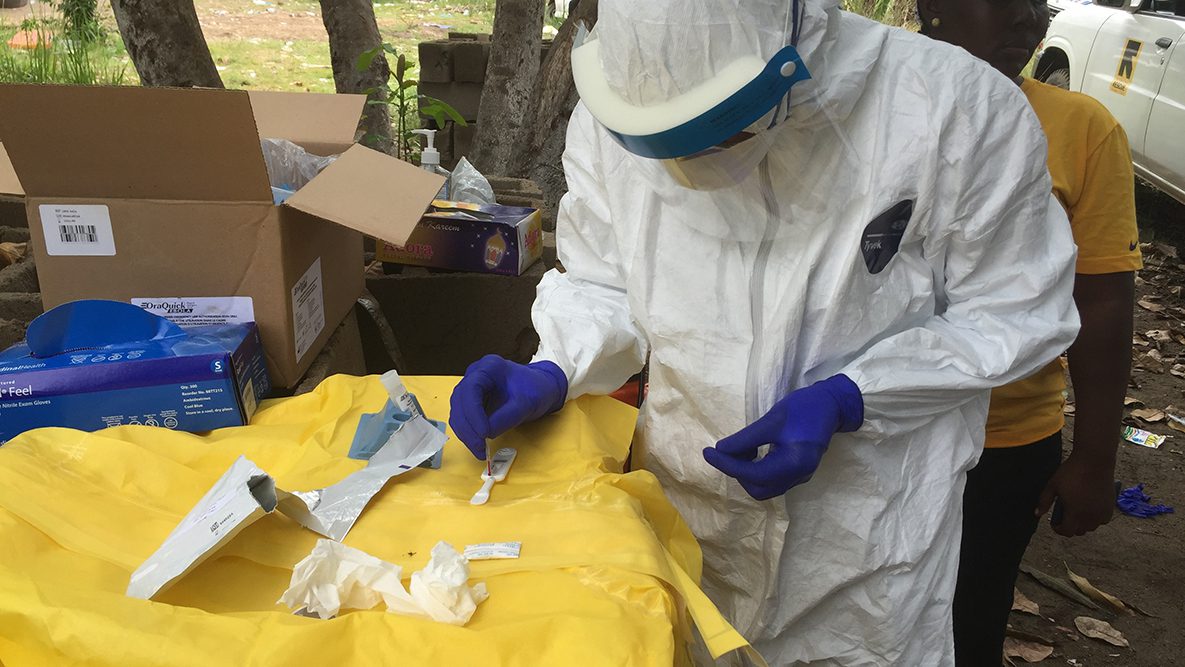Detect threats, including emerging biological threats, at the earliest possible moment.

Disease detectives conducting testing out in the field during the 2014 Ebola outbreak in Liberia.
Action Package Results—CDC-Supported Achievements in 17 Priority Countries
- 9 Countries
- 1.73 Billion Total Population
Results: Countries that have testing capacity for all country-prioritized pathogens using core tests.
Why it matters: Confirming diagnosis with labs allows health workers to respond rapidly with the most effective treatment and prevention methods.
- 10 Countries
- 1.86 Billion Total Population
Results: Countries that have a national database linking suspect case reports and laboratory data from all subnational jurisdictions.
Why it matters: Effective disease surveillance enables countries to quickly detect outbreaks and continuously respond to potential risks.
- 10 Countries
- 1.71 Billion Total Population
Results: National database(s) improvements to include laboratory data for priority notifiable diseases or syndromes with case-based reporting.
Why it matters: Procedures and systems for reporting potential outbreaks allow experts to assess public health events and respond rapidly.
- 17 Countries
- 2.44 Billion Total Population
Results: Establish or expand the public health workforce training of field-based epidemiologists (disease detectives).
Why it matters: To maintain global health security capabilities, countries need people who can quickly investigate potential outbreaks, identify the issue, and take swift action.
- Establish monitoring systems that can predict and identify infectious disease threats at various levels of the health system, including community, district, and national levels, as well as global monitoring through CDC’s Global Disease Detection Operations Center
- Strengthen countries’ ability to quickly and accurately collect, analyze, and use public health information
- Train disease detectives, laboratory scientists, and veterinarians who are equipped to identify, track, and contain outbreaks in humans and animals before they spread
What Remains to Be Done?
Although great progress has been made in disease surveillance, 7 of 17 GHSA Phase I countries still do not have a database that links suspect cases of illness with laboratory confirmation, and 8 of 17 GHSA Phase I countries do not have a web-based database for reporting cases of epidemic-prone diseases. This leaves countries vulnerable, as they cannot accurately monitor the presence and spread of disease, nor can they quickly share outbreak information via electronic systems. To address these gaps, CDC is working with countries to strengthen disease detection through web-based databases that are linked to laboratory results, enabling more timely and coordinated outbreak identification and response.